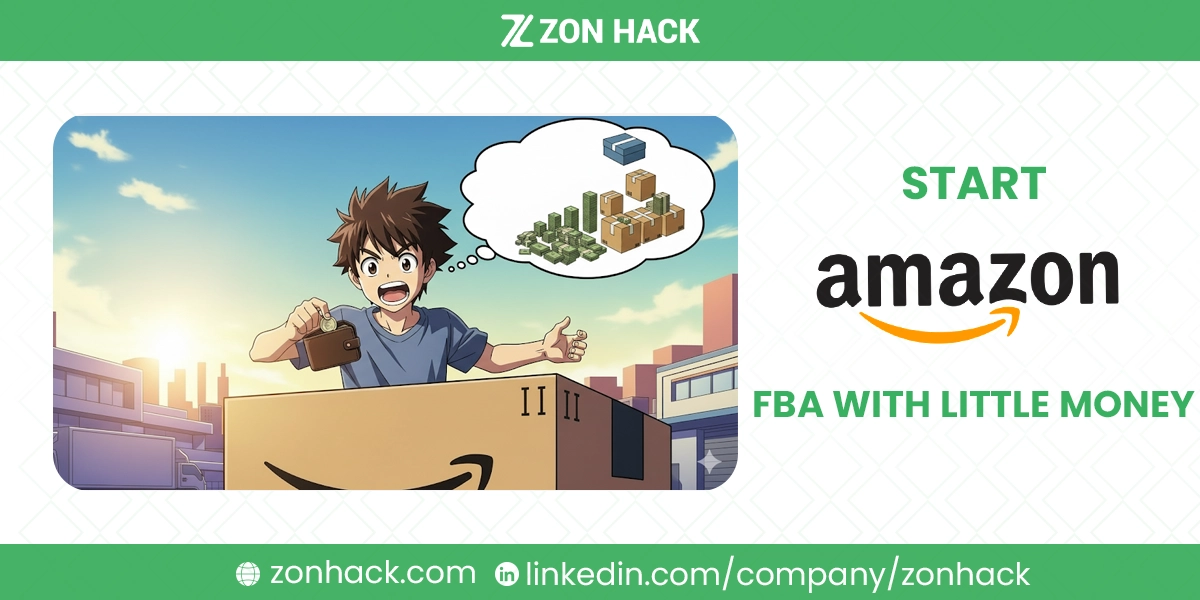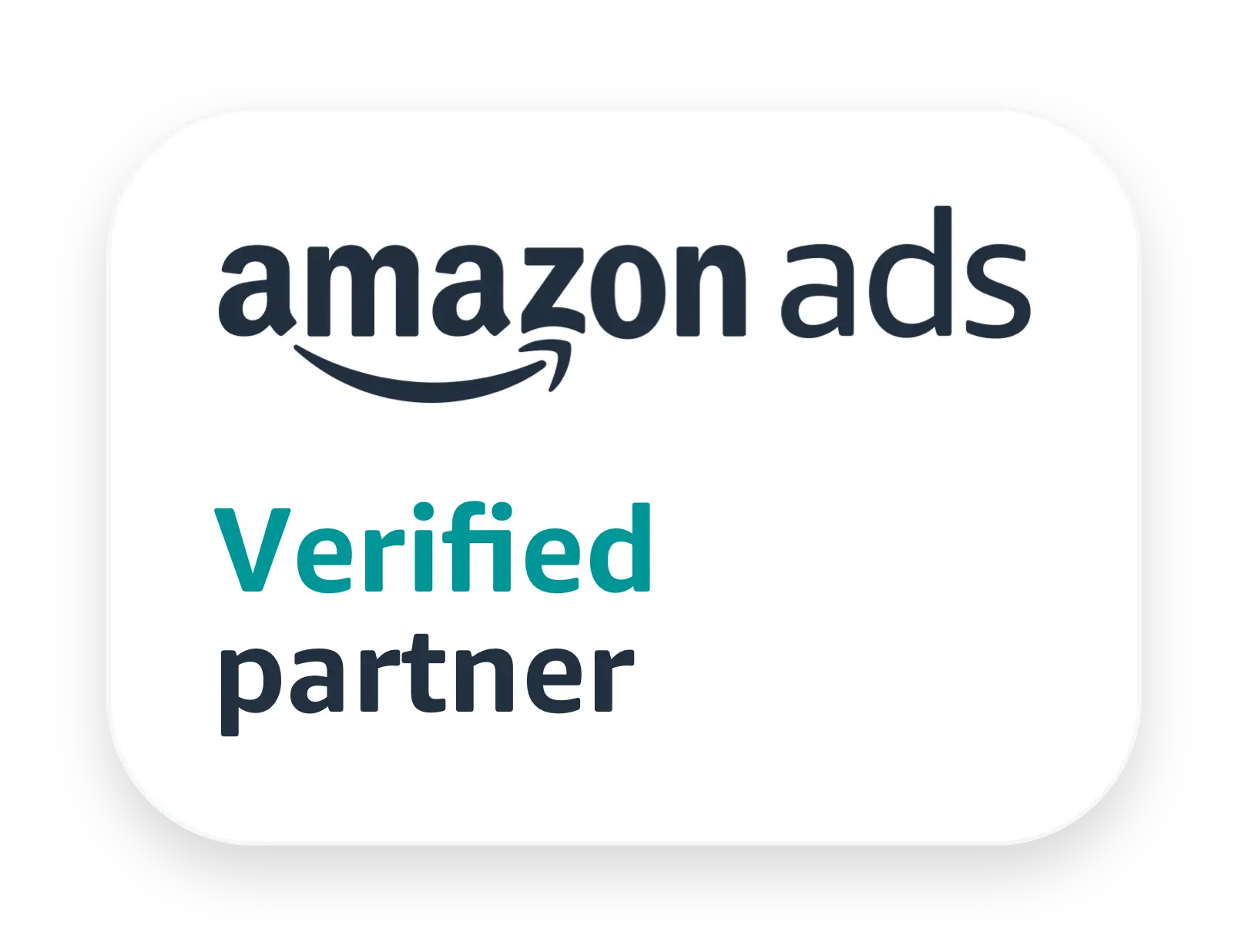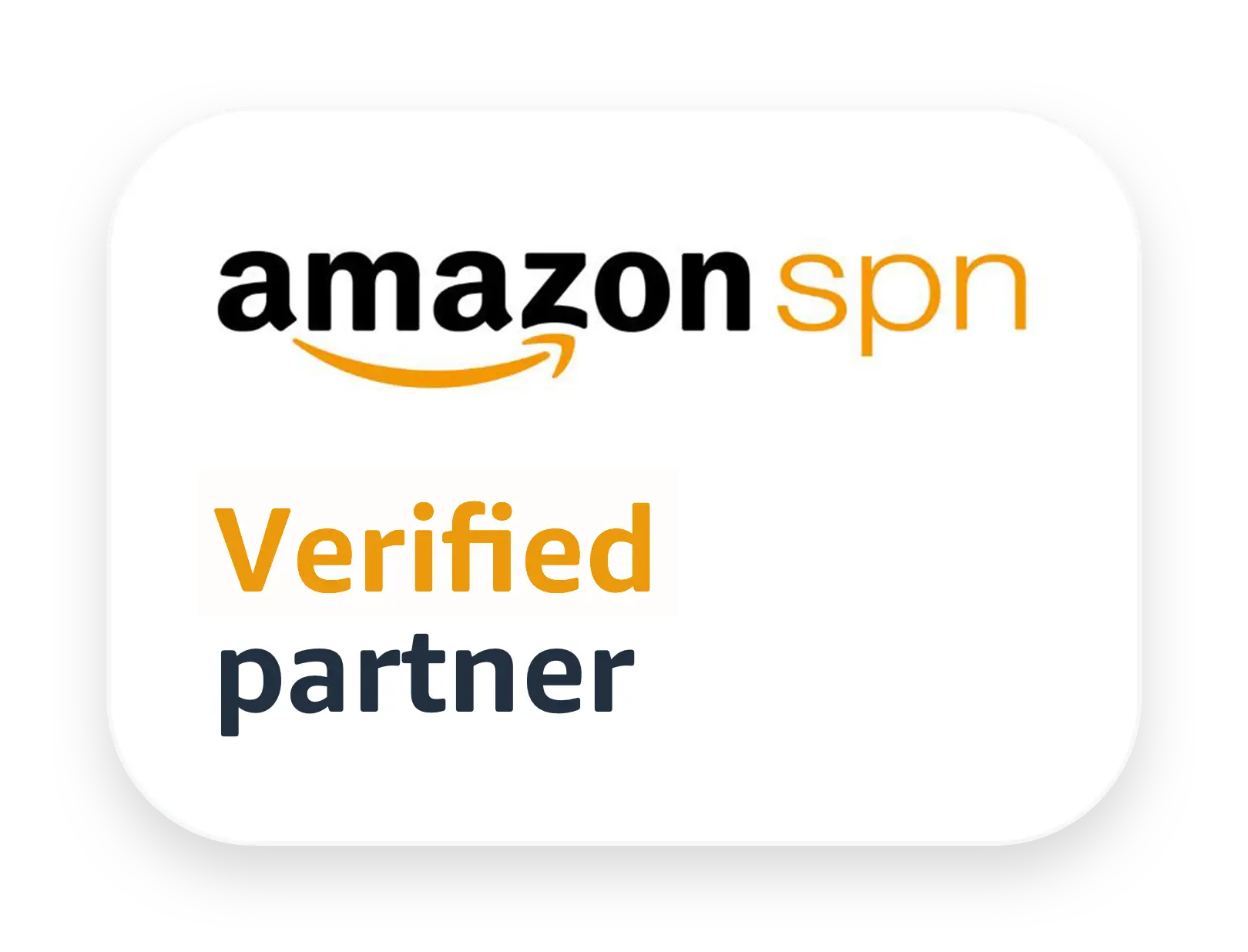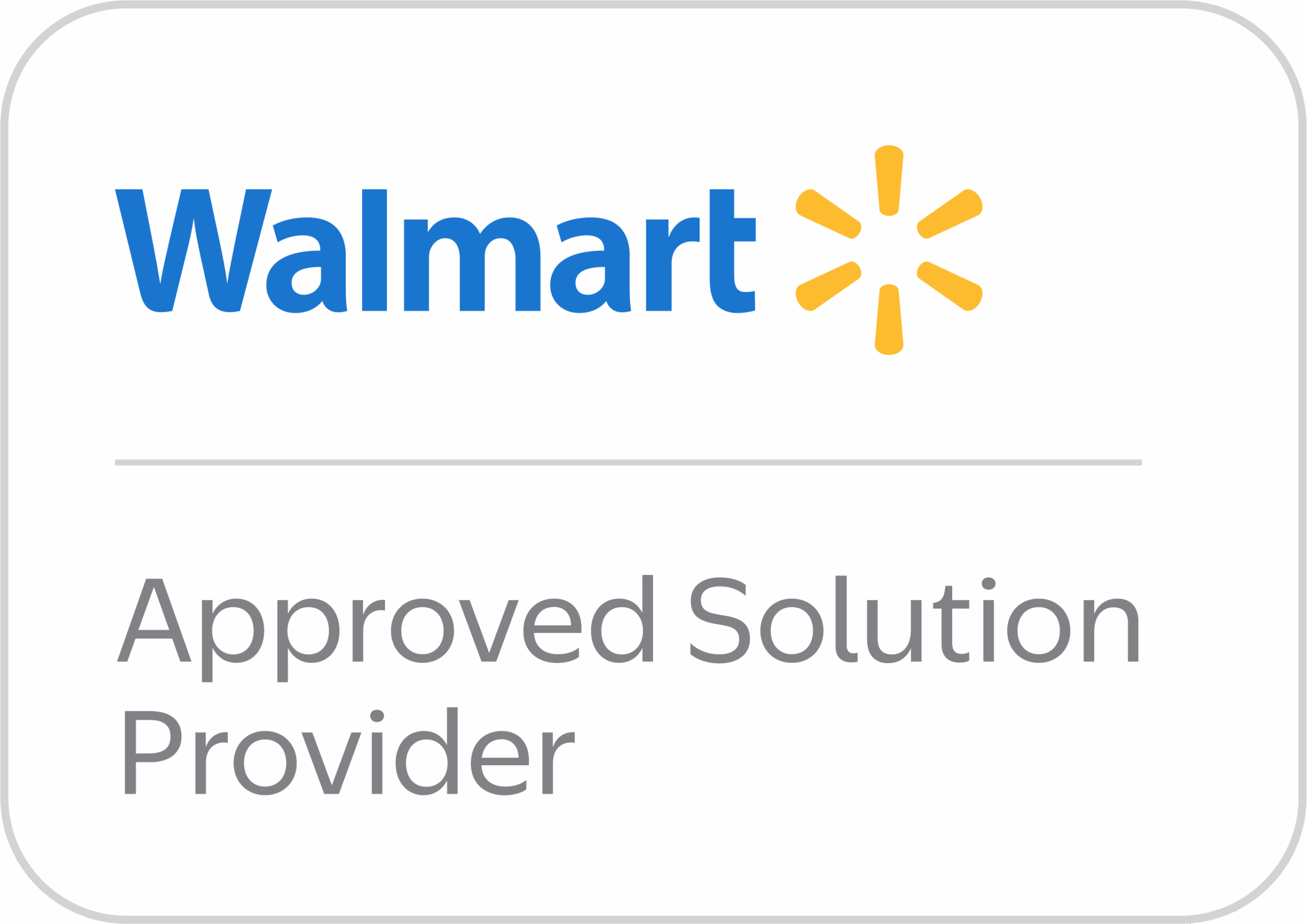Starting an Amazon FBA business sounds exciting, right? But the moment we think about it, most of us imagine huge costs, piles of inventory, and a budget that feels out of reach. The truth is, you don’t need thousands of dollars to get started. With the right strategy, smart product choices, and a bit of creativity, you can launch your FBA journey even on a tight budget.
I’ve been there—staring at the numbers and wondering if it’s even possible to break into the Amazon game without draining my savings. The good news? It is possible. Let me walk you through some of the most practical ways to start Amazon FBA with little money.
Key Ways to Start Amazon FBA on a Budget
Starting an Amazon FBA business with a small budget is a dream for many. But is it possible? Yes, it is. All you need is a proper strategy, a little bit of creativity, and a lot of hard work. I am here to help you with the strategy part.
Choose a Low-Cost Business Model
Not every Amazon business model needs big bucks upfront. If you’re on a budget, you’ll want to skip the private label route in the beginning since it demands heavy investment in manufacturing, branding, and bulk orders. Instead, try these options:
Retail Arbitrage: This is one of my favorite models for beginners. It is super simple and doesn’t require a lot of money. All you have to do is find discounted products from retail stores like Walmart, Target, Home Depot, or even drug stores and resell them on Amazon for a higher price. It’s like being a treasure hunter. You never know what you’ll find. I remember once I found a bunch of discontinued toys at a local store and made a good profit by selling them on Amazon. The best part is that you can start with as little as a few dollars.
Let’s say you find a set of headphones at Walmart on clearance for $10. That same model sells on Amazon for $29.99. After Amazon’s FBA fees (around $8), your net would be about $12 profit per unit. If you bought 20 units, that’s a total investment of $200 and potential profit of $240. Not bad for a quick flip.
Online Arbitrage: This is similar to retail arbitrage, but you do all the hunting online. You can find great deals on websites like eBay, clearance sections of big retailers’ websites, or even on Amazon itself. You can also use special software to find deals. The beauty of online arbitrage is that you can do it from the comfort of your home. You don’t have to drive around looking for deals. I love this model because it saves me a lot of time and gas money.
Imagine buying a trendy kitchen gadget online for $15 (including shipping). On Amazon, it’s going for $39.99. After fees (let’s say $10), you pocket about $15 profit per sale. Even with just 10 units, your initial spend of $150 could bring back $150 profit.
Dropshipping: This model is perfect for those who want to start a business with almost no money. In dropshipping, you don’t keep any inventory. When a customer buys a product from your Amazon store, you simply order it from a third-party supplier who then ships the product directly to the customer. This completely eliminates the need for you to buy and store inventory. It’s a risk-free model that allows you to test different products without investing any money. However, a major downside is that you have less control over shipping times and customer service, so be sure to work with a reliable supplier.
For example, a customer orders a phone case from you for $19.99. You then buy it from a supplier for $8 and ship it directly to the customer. Amazon fees might be around $5, leaving you $6 profit per sale. The margins are smaller, but you’re spending almost nothing upfront.
Strategic Product Selection
When money is tight, product choice makes or breaks your business. Instead of picking random items, look for products that tick these boxes:
Small and Lightweight: This is a big one. Amazon FBA fees are based on the product’s size and weight. The bigger and heavier your product is, the more you have to pay in fees. When you are on a budget, every dollar counts. So, always look for products that are small and lightweight. A good example would be phone cases, small kitchen gadgets, or jewelry.
Example: Selling yoga resistance bands. They weigh less than 1 lb, cost about $2–$3 per unit wholesale, and can sell for $15–$20. The shipping and FBA fees stay low, leaving you with solid margins.
Low Minimum Order Quantity (MOQ): If you decide to go with the private label model, finding a supplier with a low MOQ is super important. Many suppliers, especially from China, have high MOQs, which can be thousands of dollars. As a beginner on a budget, you simply can’t afford that. Look for suppliers who are willing to start with a smaller test order, maybe 50 to 100 units. Some suppliers on Alibaba or similar sites are open to working with small businesses.
Let’s say a supplier agrees to sell you 50 reusable water bottles at $4 each. That’s a $200 investment. If they sell on Amazon for $19.99, after fees you clear about $8 profit each. Selling all 50 would net you around $400 profit.
High-Profit Margin: This is a no-brainer. You need to make a profit to stay in business. When calculating your profit margin, don’t forget to include all the Amazon fees. A good rule of thumb is to look for products that have at least a 30% profit margin after all fees are taken into account. I always aim for products that sell for $20 to $70. Products below this range often have very little profit left after fees.
If you invest $10 into a product and sell it for $35, after Amazon’s cut (~$10), you’d still pocket $15 profit per sale—that’s a 150% return.
Low Competition: Avoid highly competitive categories like electronics, apparel, or books. These categories are dominated by big brands with massive marketing budgets. It will be very hard for you to compete with them. Instead, look for a niche where the top listings have a low number of reviews, say less than 200. This is a good sign that the niche is not too crowded and you have a chance to succeed.
Look for products with fewer than 200 reviews in the top results. For instance, if a bamboo desk organizer has only 50 reviews but sells 500 units a month, you’ve got a chance to compete without fighting big brands.
Evergreen Products: This means products that are in demand all year round. Avoid seasonal items like Halloween costumes or Christmas decorations. Once the season is over, you might be stuck with a lot of inventory that no one wants to buy. Evergreen products, on the other hand, will always have demand, which means you can sell them throughout the year and make a consistent income.
Phone chargers, kitchen utensils, or pet accessories don’t depend on seasons. For example, a pet grooming glove that costs $3 wholesale can sell year-round for $14.99, leaving you $5–$6 profit after fees.
Minimize Your Startup Costs
Every dollar counts when you’re bootstrapping. Here’s how to stretch your budget and still set yourself up for success:
Seller Account: Amazon offers two seller plans: the “Individual” plan and the “Professional” plan. The “Professional” plan costs $39.99 per month, but the “Individual” plan has no monthly fee. It charges you $0.99 for every item you sell. If you are starting with a small number of products, the “Individual” plan is the best option for you. You can always upgrade to the “Professional” plan once your sales pick up.
If you sell 30 items in your first month, you’ll only pay $29.70 total in fees instead of the $39.99 flat fee for a Professional plan.
Product Sourcing: Many people think that they have to source products from China to get a good price. But that’s not always true. You can find great deals from domestic wholesalers or even local suppliers. This can significantly reduce your shipping costs and time. It also reduces the risk of things going wrong with international shipping.
If you buy products locally for $5 each and avoid international shipping costs, you can test 40 units for just $200. This is way cheaper than waiting weeks for overseas shipping with high minimum orders.
DIY Your Listing: This is a great way to save money on professional services. You don’t have to hire a professional photographer to take pictures of your products. A good smartphone camera and good lighting can do the job. You can also write your own product descriptions and use free design tools like Canva to create your images. Just make sure your photos are high-quality and showcase the product from all angles.
A professional product photographer might charge $200–$300 per session. Instead, grab your smartphone, use natural light, and edit for free with Canva. That saves you hundreds right away.
Frugal Marketing: When you are on a budget, you can’t afford to spend a lot of money on Amazon PPC ads. Instead, focus on low-cost or free marketing. Optimize your product listing with relevant keywords so that it ranks high in organic search results. This will bring you free traffic. You can also use social media to promote your product. Create a Facebook or Instagram page for your brand and share your product with your friends and family. You can also join relevant groups and communities to promote your product.
Instead of spending $500+ a month on ads, you can start with SEO. For example, optimizing your listing with keywords like “eco-friendly reusable coffee cup” can help you rank without paying for clicks. You can also create a quick TikTok video showing your product in use—free and effective.
A Practical Look at Profit
Numbers don’t lie. I know talking about profit margins in theory is one thing, but seeing it in practice is what really makes it click. Let’s look at a real-world example of how the math works for a simple product.
Imagine you find a reusable silicone food storage bag that is small and lightweight. It costs you $2.50 per unit from a local wholesaler. You decide to sell it on Amazon for $20.00.
Now, let’s break down the Amazon fees. This is the most important part.
- Referral Fee: Amazon takes a percentage of the sales price, which is typically around 15% for kitchen items. So, 15% of $20.00 is $3.00.
- FBA Fulfillment Fee: Since it’s a small, lightweight item, the fulfillment fee (which covers picking, packing, and shipping) might be around $3.50.
- Monthly Storage Fee: The storage fee for a small item is very low, maybe a few cents per month. Let’s say it’s around $0.10.
Now let’s do the math:
- Sales Price: $20.00
- Cost of Goods: -$2.50
- Amazon Referral Fee: -$3.00
- FBA Fulfillment Fee: -$3.50
- Monthly Storage Fee: -$0.10
- Total Profit Per Unit: $10.90
That’s a fantastic profit. Your profit margin is 54.5% ($10.90 / $20.00). Now, imagine you sell just 10 of these bags a day. That’s $109 a day in profit, which is over $3,000 a month! This shows that even with a low-cost product, the profits can really add up
Frequently Asked Questions
Q: Can I really start with only $500?
A: Yes, it is possible. But it will require a lot of patience, hard work, and smart decisions. Your first goal is not to make a lot of money, but to break even and prove your business model. Reinvesting your profits back into the business is a great strategy to grow it over time.
Q: What is the biggest mistake new sellers make?
A: The biggest mistake I see new sellers make is not doing enough research. They choose a product they think is great without checking the competition, fees, and profit margins. This can lead to a lot of money loss.
Q: Is Amazon FBA too saturated now?
A: This is a question I get a lot. While the Amazon marketplace is growing more competitive, there is still plenty of opportunity to succeed. You just have to be more creative and strategic than before. Find a niche, do your research, and offer value to your customers.
Conclusion
So, there you have it. You don’t need a huge amount of money to start an Amazon FBA business. With a low-cost business model, strategic product selection, and smart money-saving tips, you can start your own FBA journey. It won’t be easy, and you might face some challenges, but don’t give up. The most important thing is to start small, learn from your mistakes, and reinvest your profits back into the business. Remember, every successful business started somewhere. Your dream of owning an Amazon FBA business is within your reach.
I hope this article has given you the confidence and motivation to start your Amazon FBA journey. If you have any questions or concerns, feel free to leave a comment below. I would love to hear from you. Thank you for reading, and I wish you the best of luck with your business.




